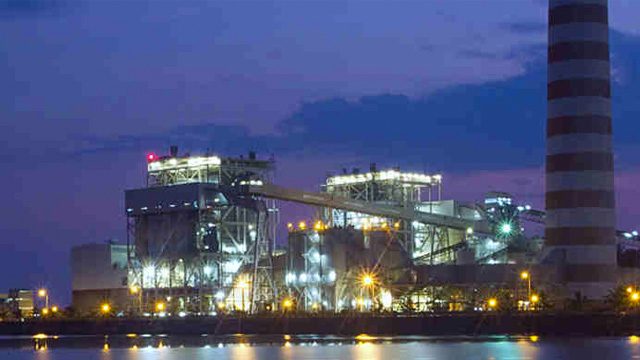SUMMARY
This is AI generated summarization, which may have errors. For context, always refer to the full article.

MANILA, Philippines – The country will have over 5,000 megawatts (MW) of additional power generation capacity from 49 power projects that the private sector has committed for commercial operation any time until 2019.
Majority of the new capacity will come from coal power plants despite the Department of Energy (DOE) pushing for a 1/3 rule in terms of an energy mix of 30% for coal, 30% for gas, and 30% for renewable energy, with the rest from other technologies.
Of the additional capacity, 2,564.28 MW will be produced for Luzon, 486.57 MW for Visayas, and 1,963 MW for Mindanao.
Coal plants
Based on the latest data provided by the DOE as of June 30, the total capacity of the various coal power plants that will be put up is expected to reach 3,362 MW.
Majority of this will be in Mindanao at 1,855 MW, followed by Luzon at 1,237 MW, and the Visayas at 270 MW.
In Luzon, the committed coal power projects targeted for commercial operation this year include the 2×150 MW of Southwest Luzon Power Generation Corporation, the 135 MW of South Luzon Thermal Energy Corporation in Batangas, and the 82MW of Anda Power Corporation in Pampanga.
The first 150 MW of SMC Consolidated Power Corporation’s power project in Limay, Bataan will be available by 2016.
By 2017, SMC’s second 150-MW unit will be made available in January while the 420 MW of Pagbilao Energy Corporation in Quezon will be ready by November.
In Mindanao, Sarangani Energy Corporation’s 200-MW coal plant will be commercially ready by November this year and Therma South Incorporated’s second 150-MW unit by June.
FDC Utilities, Incorporated’s 3 x135-MW plant in Misamis Oriental and SMC’s 2 x150-MW in Davao del Sur are expected in 2016.
By 2017, GN Power Kauswagan Ltd. Co.’s 540-MW in Lanao del Norte and Minergy Coal Corporation’s 3×55-MW in Misamis Oriental will be commercially available.
Visayas only has one coal power project in the works, Palm Concepcion Power Corporation’s 2 x135-MW power facility in Iloilo, which is expected to be available in 2016.
By 2020, there will be 23 new coal-fired power plants up and running, former energy secretary Carlos Jericho Petilla confirmed previously.
Energy think tank and global consultancy IHS, for its part, warned about the overreliance on coal energy.
“If coal projects are implemented as planned, Luzon’s coal generation share will be over 75 percent by 2030, and many coal plants will be uneconomic,” it said. “Without intervention, the Philippines is on the path to having the highest coal share in Asia.
Gas plants
The DOE data shows natural gas-fed power plants are second to coal in expected capacity.
Based on DOE’s Private Sector Initiated Power Projects, 1,150 MW of new capacity is expected to come from natural gas plants, all from Luzon.
Energy Wind Corporation targets to put up a 600-MW power plant in Pagbilao, Quezon in November 2017.
First Gen Corporation’s Prime Meridian PowerGen Corporation will start its 100MW San Gabriel Avion power plant in Batangas in September this year.
First NatGas Power Corporation ‘s 450-MW San Gabriel power plant phase II will be also be put up in Batangas by June 2016.
Ensuring gas supply
Senator Sergio Osmena III, chair of the House Committee on Energy, said that the private sector and the government must work as early as now to ensure the stable supply of gas.
“I am telling you now that we have to got to resolve our natural gas infrastructure. We are going to run out of gas so what do we do with the 2,700 MW gas-fired power plants now being fueled by Malampaya?” he pointed out.
The country’s only producing gas field, Malampaya, is expected to run out of gas by 2024.
Due in part to this, Pilipinas Shell Petroleum Corporation and First Gen have announced plans to build LNG import facilities in order to import liquefied natural gas (LNG) from other countries.
LNG is a natural gas that has been converted into a liquid state for easier storage and transportation. Upon reaching its destination, LNG is re-gasified so it can be distributed through pipelines as natural gas. – Rappler.com
Add a comment
How does this make you feel?
There are no comments yet. Add your comment to start the conversation.